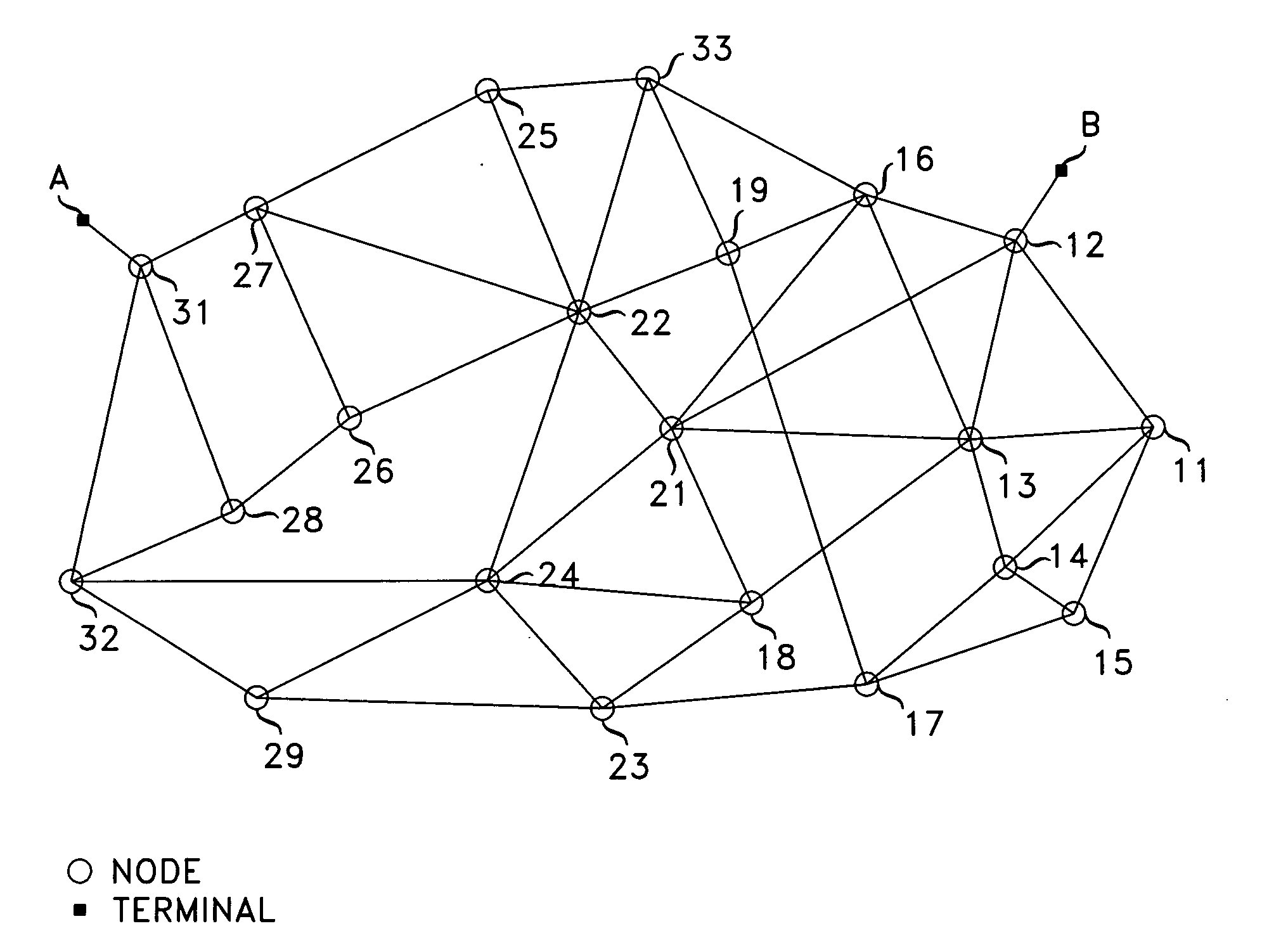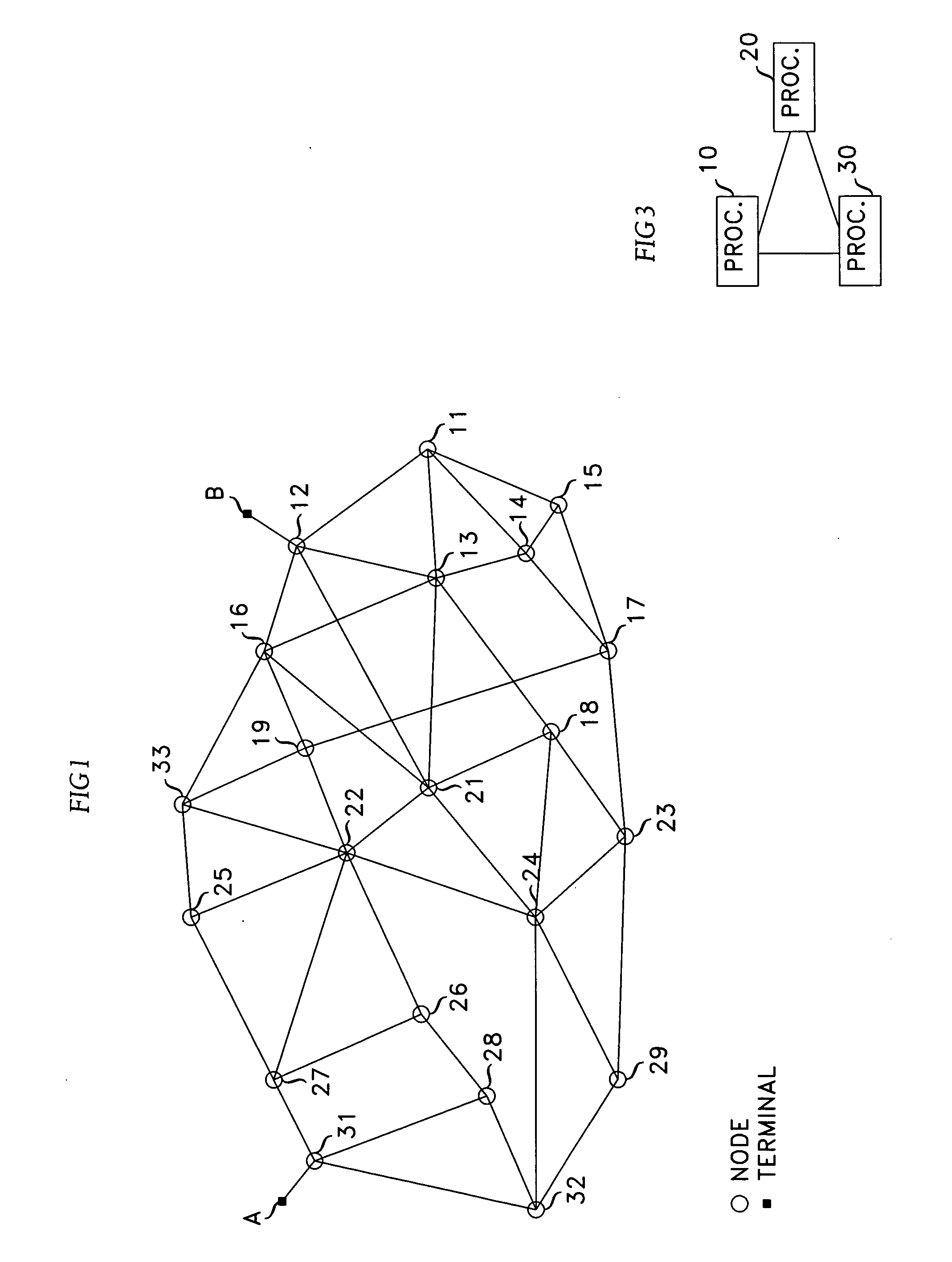Employing parallel processing for routing calls
a parallel processing and routing call technology, applied in the field of network routing, can solve the problems of a lot of computation of a least-cost path, a lot of processing burden, and the inability to find the shortest path between a given pair of terminal points, etc., and achieve the effect of reducing the cost of decomposition and processing burden, and reducing the cost of path-finding operation
- Summary
- Abstract
- Description
- Claims
- Application Information
AI Technical Summary
Benefits of technology
Problems solved by technology
Method used
Image
Examples
Embodiment Construction
[0009]FIG. 1 depicts a network where a path needs to be established between nodes 31 and 12. Illustratively, the FIG. 1 network is a telecommunication network where nodes 31 and 12, or more particularly customer terminals A and B that are coupled to nodes 31 and 12, respectively, need to be interconnected. Therefore, it is desirable to identify a least-cost path between them nodes 31 and 12.
[0010]In accord with the principles disclosed herein, the FIG. 1 network is divided into a number of segments. If the pair of nodes 31-12 is viewed to be lying on a latitude line, the segmenting is basically along longitude lines. Illustratively, the FIG. 1 network is segmented to form a first network segment that includes customer terminal A, a second network segment that includes customer terminal B, and a third network segment therebetween. The segmenting can be with cuts through network links, forming a pair of phantom half-nodes at the cut-point of each link, with one of the phantom half-nod...
PUM
 Login to View More
Login to View More Abstract
Description
Claims
Application Information
 Login to View More
Login to View More - R&D
- Intellectual Property
- Life Sciences
- Materials
- Tech Scout
- Unparalleled Data Quality
- Higher Quality Content
- 60% Fewer Hallucinations
Browse by: Latest US Patents, China's latest patents, Technical Efficacy Thesaurus, Application Domain, Technology Topic, Popular Technical Reports.
© 2025 PatSnap. All rights reserved.Legal|Privacy policy|Modern Slavery Act Transparency Statement|Sitemap|About US| Contact US: help@patsnap.com



